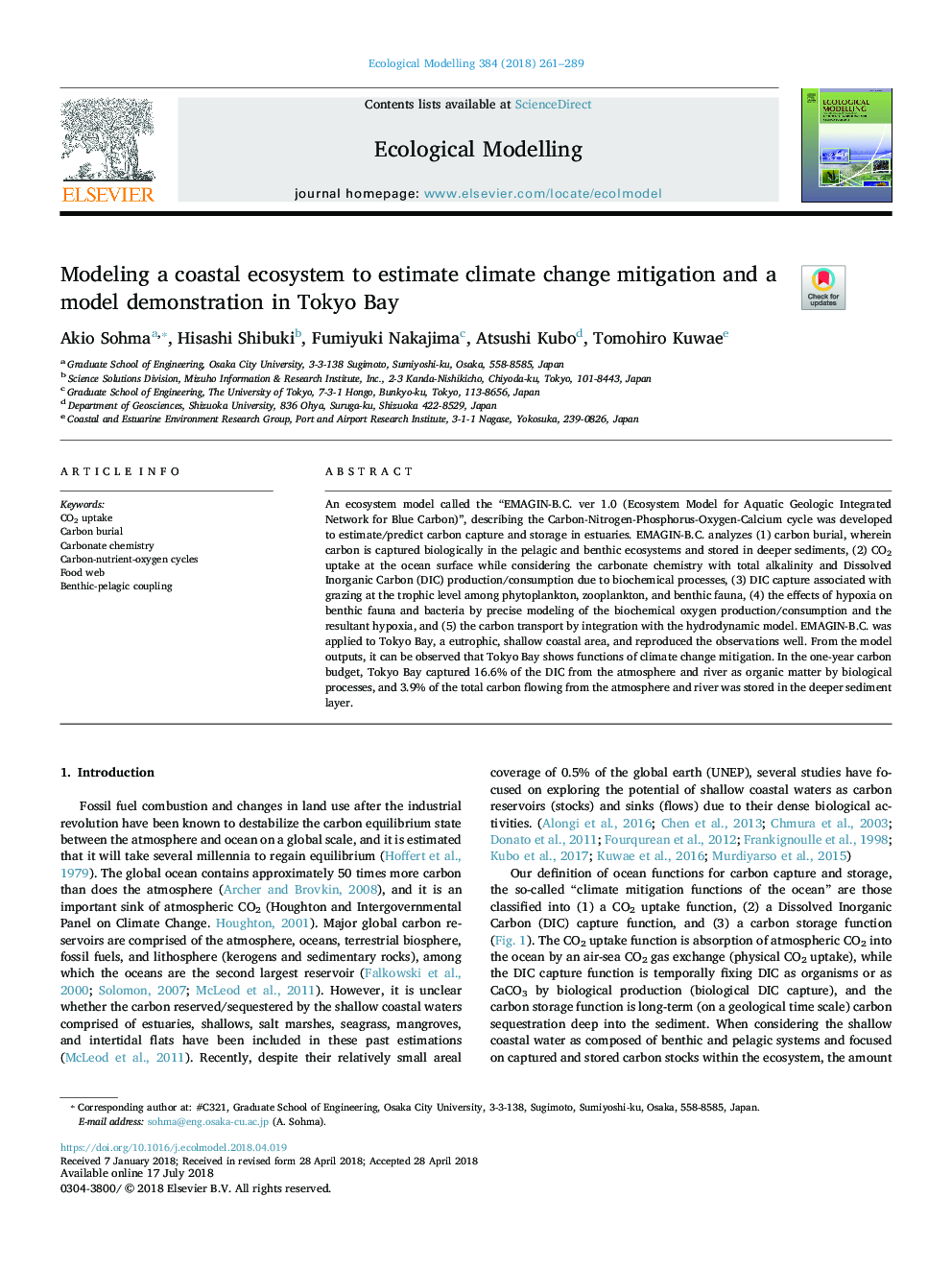| Article ID | Journal | Published Year | Pages | File Type |
|---|---|---|---|---|
| 8846010 | Ecological Modelling | 2018 | 29 Pages |
Abstract
An ecosystem model called the “EMAGIN-B.C. ver 1.0 (Ecosystem Model for Aquatic Geologic Integrated Network for Blue Carbon)”, describing the Carbon-Nitrogen-Phosphorus-Oxygen-Calcium cycle was developed to estimate/predict carbon capture and storage in estuaries. EMAGIN-B.C. analyzes (1) carbon burial, wherein carbon is captured biologically in the pelagic and benthic ecosystems and stored in deeper sediments, (2) CO2 uptake at the ocean surface while considering the carbonate chemistry with total alkalinity and Dissolved Inorganic Carbon (DIC) production/consumption due to biochemical processes, (3) DIC capture associated with grazing at the trophic level among phytoplankton, zooplankton, and benthic fauna, (4) the effects of hypoxia on benthic fauna and bacteria by precise modeling of the biochemical oxygen production/consumption and the resultant hypoxia, and (5) the carbon transport by integration with the hydrodynamic model. EMAGIN-B.C. was applied to Tokyo Bay, a eutrophic, shallow coastal area, and reproduced the observations well. From the model outputs, it can be observed that Tokyo Bay shows functions of climate change mitigation. In the one-year carbon budget, Tokyo Bay captured 16.6% of the DIC from the atmosphere and river as organic matter by biological processes, and 3.9% of the total carbon flowing from the atmosphere and river was stored in the deeper sediment layer.
Related Topics
Life Sciences
Agricultural and Biological Sciences
Ecology, Evolution, Behavior and Systematics
Authors
Akio Sohma, Hisashi Shibuki, Fumiyuki Nakajima, Atsushi Kubo, Tomohiro Kuwae,
